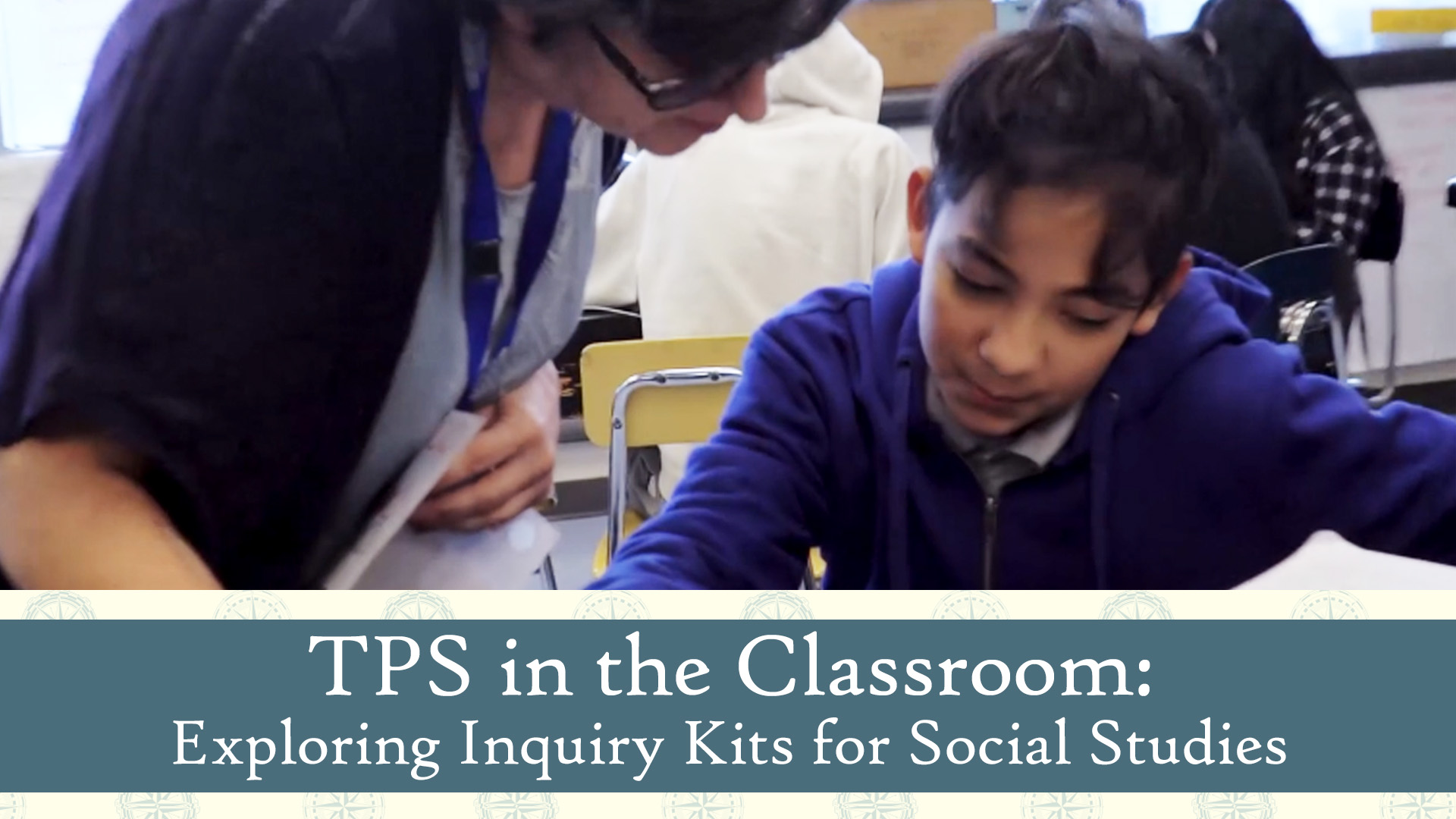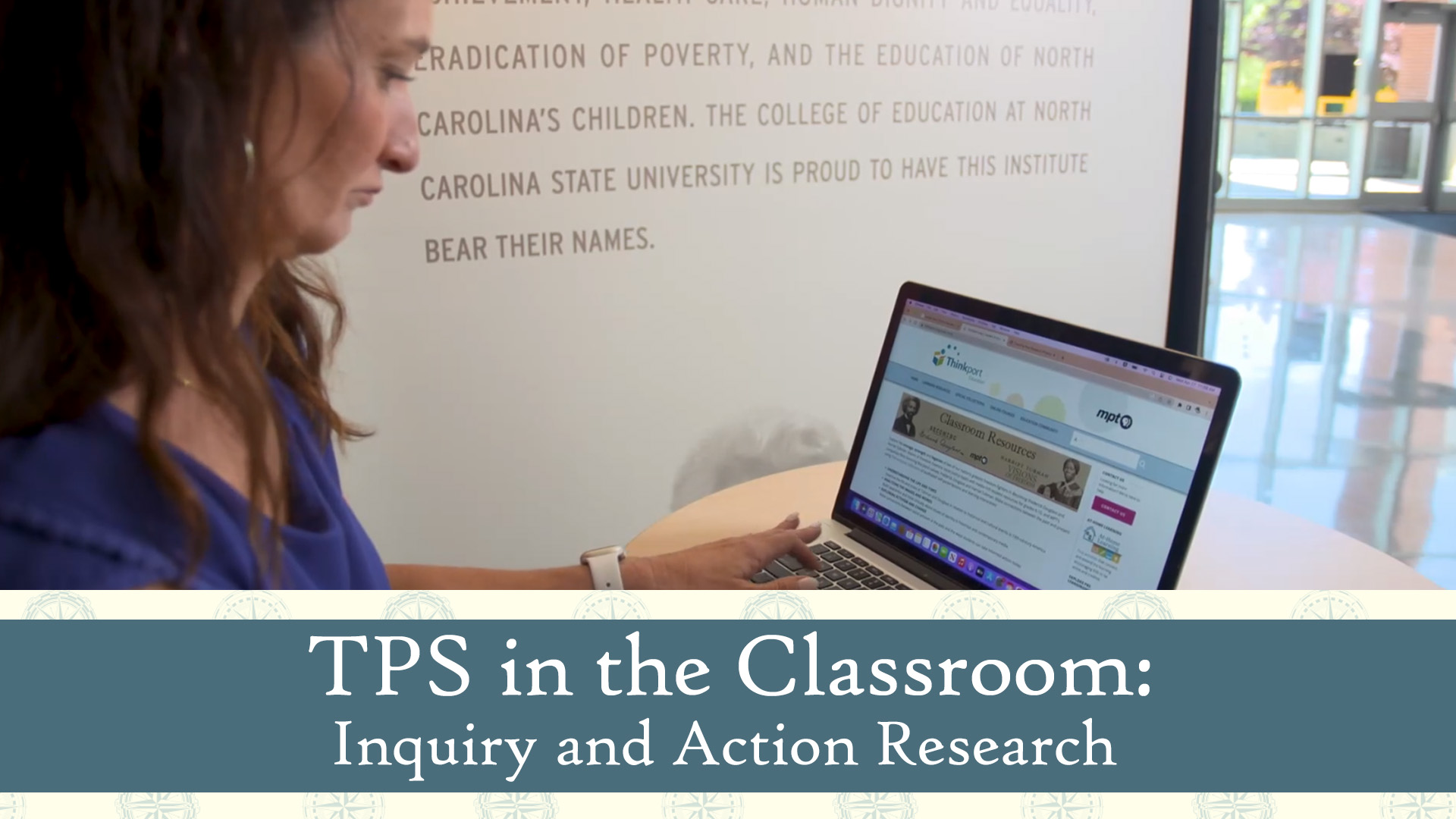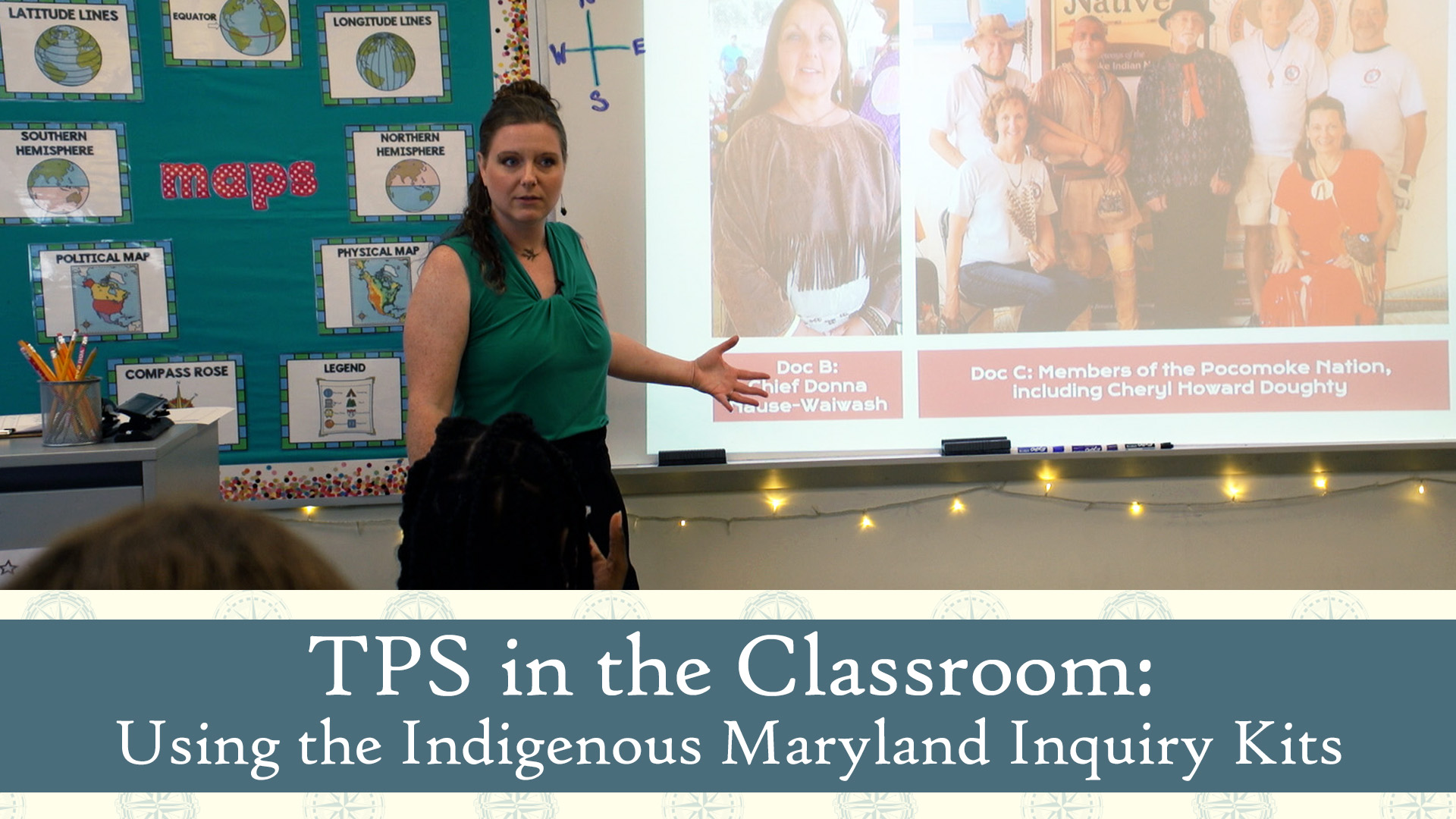What is inquiry?
As social studies curricula across the country shift toward inquiry-based learning, more teachers are asking this question and looking for ways to implement this practice in the classroom. Inquiry in social studies is driven by student investigation of a topic, where primary sources can both elicit questions and provide answers. Historical photographs, illustrations, videos, letters, newspapers, and other types of sources help students engage more closely with the historical moment, hunting down details and making connections with what they already know. Inquiry fosters curiosity and encourages student-guided learning that continues beyond the social studies classroom.
TPS in the Classroom
Use our professional development module series, TPS in the Classroom, to spark inquiry learning with your students, and to expand your teaching practice through action research.

Inquiry Kits for Social Studies are thematic sets of high-quality primary and secondary sources that explore different topics and historical eras. Explore the components of the inquiry kits and identify ways to use them in your classroom by adapting and differentiating for diverse learners.
» Go to TPS in the Classroom: Exploring Inquiry Kits for Social Studies Module

Explore the relationship between inquiry learning and action research in professional development, and identify ways to use action research questions to support classroom implementation of the Inquiry Kits for Social Studies. Learn how to apply action research findings to enhance your use of these kits.
» Go to TPS in the Classroom: Inquiry and Action Research Module

Identify ways to use the Indigenous Maryland History Kits in your classroom and learn about the challenges of teaching Indigenous history and working with available sources. Explore additional strategies for further investigation and discover ways to deepen your understanding of Indigenous people in Maryland.
» Go to TPS in the Classroom: Using the Indigenous Maryland Inquiry Kits Module
What are Inquiry Kits?
Inquiry Kits for Social Studies are designed with student inquiry and teacher convenience in mind. The Inquiry Kits are organized to correspond with units in United States History, World History, and United States Government classes, while the Elementary Kits cover select subjects of interest often taught in elementary school. Each topic is relevant to the curriculum, yet also appealing to students. An Inquiry Kit has five primary sources, most of which are from the Library of Congress, and one secondary source.
Many of the primary sources are images, maps, audio, or video to support accessibility by students of any reading level. Some text-based sources have transcriptions available to eliminate as many barriers to comprehension as possible. Once students learn the process of primary source analysis, teachers can provide scaffolding that helps them analyze increasingly challenging documents.
How to Use Inquiry Kits
Each kit includes three thinking questions to help guide students as they analyze the documents and to start the process of inquiry. Many students use the kits as a starting point for project-based learning. The kits provide a curated selection of documents to work with, and students can do further research to create exhibits, performances, documentaries, websites, or papers.
The kits are also a resource for teachers creating lesson plans and classroom activities. Teachers might choose to simply use one document and one question as a warm-up at the beginning of class. You could also facilitate a variety of activities using all six sources as a set, such as arranging them in a gallery walk for students to analyze.
ESOL Leveled Text and Thinking Questions
For teachers with students at a variety of reading levels in their classroom, teaching primary source texts can be a challenge. For every United States History and World History Unit, ESOL specialist Ann Morgan has provided paraphrased text for one primary source text. In addition to the original text, the paraphrased text is presented at three different reading levels, each with questions to engage the reader. This allows every student in the class to have a meaningful experience with a primary source, but at their own pace. Teachers should present the paraphrased text alongside a copy of the original document, accessible through a link on each page.
Unit 1 | Unit 2 | Unit 3 | Unit 4 | Unit 5 | Unit 6 | Unit 7 | Unit 8 | Unit 9 | Unit 10 | Unit 11
 Students who create projects based on Inquiry Kit documents are invited to enter them in local History Day contests. Click the link below to find National History Day® (NHD) local program contact information.
Students who create projects based on Inquiry Kit documents are invited to enter them in local History Day contests. Click the link below to find National History Day® (NHD) local program contact information.
National History Day Affiliates (opens in new window)
Give Feedback on the Inquiry Kits
Help us improve the Inquiry Kit for Social Studies and related resources by filling out our teacher survey. Click the link below to access the survey.
Teaching With Primary Sources: Inquiry Kits Teacher Survey (opens in new window)
Additional Resources
The Inquiry Kits for Social Studies include a series of Research Learning Modules to teach primary source analysis and research skills. Students can work through the 12 interactive lessons on their own or as a class.
The following list includes many more resources available to teachers using document analysis and project-based learning in their classroom.
Primary Sources
- Library of Congress (opens in new window)
- Library of Congress Teachers’ Page (opens in new window)
- National Archives DocsTeach (opens in new window)
- TPS Eastern Region Primary Source Ideas, Activities, and Lesson Plans (opens in new window)
- Emerging America’s Accessing Inquiry (opens in new window)
- Stanford History Education Group (opens in new window)
- Beyond the Bubble: Primary Source-Based Assessments (opens in new window)
- Teaching with Primary Sources Teacher Network (opens in new window)
- Citizen U Primary Source Nexus (opens in new window)
Maryland-focused Primary Sources:
- Digital Maryland (opens in new window)
- Maryland Center for History and Culture (opens in new window)
- Digital Resources at the Maryland State Archives (opens in new window)
Project-Based Learning
- Maryland History Day (opens in new window)
- Maryland History Day Teacher Resources (opens in new window)
- Maryland History Day Thesis Development Worksheet (pdf) (opens in new window)
- National History Day (opens in new window)
- NHD Connection to Common Core (opens in new window)
- NoodleTools for National History Day (opens in new window)